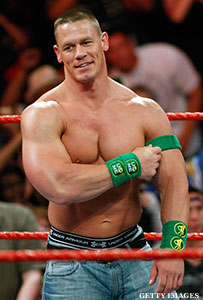Rip Rogers might be a genius. Just ask him. He’ll tell you how, in college, he wrote just one article for the Indiana Central student newspaper, only to win the conference sportswriter of the year award. How he coached high school football in Union City, Indiana, for only one year – and led the Braves to a 9-1 record. If you value your dignity, don’t even think about matching wits with him on 1920s baseball trivia.
But the most genius-like quality about Rogers has nothing to do with accomplishment. For 26 years, he made a career in professional wrestling by making others look good. He could sell getting punched, kicked and thrown out of the ring better than anyone in his field. Professional wrestling is the art of athletic performance – and during his career, Rogers was DeNiro. He might just be the best loser in pro wrestling history.
To the bulk of WWE stars, that might seem like a dubious distinction. But Rogers is from the old school. After so many years of wrestling in dingy and dangerous venues, and traveling the globe to chase the ever-elusive gig, he knows what it takes to stay in such a fleeting profession. It’s simple, really.

“Overqualified and over [expletive] prepared,” says Rogers. “To stay ahead, you’ve gotta be able to do this-this-this and this. Because in this business, they’ll fire you for no [expletive] reason.”
Today, you won’t find the former “Convertible Blond” on the receiving end of any bodyslams. Instead, Rogers, now 55, lurks among the cluster of mobile homes and pick-up trucks in suburban Louisville. If you get lost in the tangle of empty warehouses where he’s rumored to be found on Saturday afternoons, follow your ears: You’re sure to hear his R-rated rants echoing off the rows of aluminum and concrete.
The area may not be glamorous, but it’s home to one of the most respected breeding grounds of wrestling talent in the nation – Ohio Valley Wrestling. The mountaintop of pro wrestling is Sunday in Atlanta at Wrestlemania 27. But the ascent starts at OVW. There is no better place to learn how to lose in America.
Since 2000, Rogers has guided raw, inexperienced wrestlers to WWE and TNA stardom. His three-hour classes attract aspiring wrestlers from literally all corners of the globe – Japan, England, Hawaii, Minnesota – to settle down in the less-than-striking flatlands of Kentucky. Although OVW ended its affiliation with WWE in 2008, it still remains the foremost in wrestling education, largely for one reason.
“Bar none … not because he’s my business partner, or because he’s my friend of 35 years … Rip’s the best in the business,” says OVW’s owner, Danny Davis. “When it comes to educating and giving the talent a foundation, there’s none better.”
Rogers will tell you that he’s the “John Wooden of wrestling” because of the knowledge he gained during his long, workman’s career. Growing up in Seymour, Indiana, Rogers – then Mark Sciarra -- knew that he always wanted to wrestle. He even pledged such aspirations in the Seymour High newspaper.
Rogers played football and baseball at Indiana Central University and, after graduating in 1976, went to Union City to coach high school football. In order for him to coach the high school team, however, Rogers had to take a gig teaching seventh and eighth graders at the Union City middle school. But the adolescents wore on him. He left after a year.
In 1978, Rogers became the manager of Hofmeister's Gym in Indianapolis. While there, he met "Handsome" Jimmy Valiant, who persuaded Rogers to see if his ripped torso and mammoth legs could stand the rigors of professional wrestling.
Rogers quickly became known around the squared circle for his insane training regimen – which, he says, included squatting continuously for over an hour – and an ability to put on a good show. That often meant losing to weaker opponents. But no matter: “Hustler” Rip Rogers was born.
Despite his big talk now, Rogers thrived by staying humble. He knew, for instance, when to “shut the [expletive] up and listen” when veterans like Bob Orton Jr. or Ronnie Garvin were telling stories. He knew that he would have to lose all the time. But most important, to stay in wrestling, he knew he’d have to be willing to portray any character asked of him by his bookers. From “Hercules Simard” to “The Disco Kid” to “Fatso,” Rogers played 'em all.

While some of his peers, like Randy Savage, had the benefit of pedigree, Rogers succeeded in professional wrestling despite his background. That’s why he doesn’t discriminate today; heck, he sees new faces walk through the door at OVW every week. His approach to new students is simple: If you show up to his class, he will quite literally throw you in the ring. But you better come ready.
“Some guys will come in, get blown up, get embarrassed, and get out in the same day. You’re expected to work. I’ll just throw ya in there.”
Around 20 wrestlers of all shapes and sizes amble around the ring before a typical class. The mood is light, because Rogers is off on one of his many tangents – this time, about George Mikan’s resounding impact on the NBA. Then, without warning, Rogers rears his head back, and like a drill sergeant, barks something that would make Rex Ryan blush – “All right, you [expletive]s! Quit standing around!”
Practice has begun. At once, the laughter vanishes into the dingy air; grunts and groans circulate as the wrestlers jog around the facility. Losing takes work. Within an hour, the wrestlers have criss-crossed, jumped full over one another, thrown each other over the ropes, flipped each over their shoulders, and mocked takedowns, execution style, in the corner of the ring. Sweat drips everywhere.
“If you can’t keep up, that ain’t my problem,” says Rogers. “You say ‘I wanna play in the NBA’; well here’s your tryout, kid.”
Dedication. Repetition. It sounds like something that’s printed in bold letters on a high school football muscle shirt. But to Rogers, that’s how great losers are made.
Rogers can spot a faker with ease. His students know this all too well. To the naïve eye, OVW wrestler “Dre Blitz” took a wallop to the face from his counterpart. But there’s no fooling Rogers.
“Whoa! You think that was [expletive] real? They’re gonna know in a second that was fake. Get your [expletive] head out of your [expletive].”
Rogers’ demands may seem brutal, but their effectiveness is undeniable. Wander back into the depths of the OVW facility, and you’ll find a room with walls plastered with endless rows of famous alumni captured in signed photos. You can’t grasp the true magnitude of Rogers’ handprint on modern professional wrestling without the likes John Cena, Randy Orton and Brock Lesnar grinning back at you.

Nick “Eugene” Dinsmore is yet another notable OVW graduate, after wrestling for WWE in stints throughout the past decade. He says he owes much of his success to Rogers.
“I wrestled Rip when I first started,” says Dinsmore. “He was a 40-something veteran in the ring with the students of OVW. Rip worked with us like he was a coach, much like he does now.”
Dinsmore may even be following in Rogers’ footsteps: He now teaches a beginners’ class, a precursor to Rogers’ advanced course at OVW.
Those are just the stars. In his ten years, Rogers has seen oodles of unique wrestlers walk through the door. Rogers doesn’t mind the oddballs, though. After all, he’s eccentric himself, in his own frightening, profane way. His stance with every new wrestler is always the same. “I don’t judge a book by its cover,” says Rogers. “Never will.”
Utaifeua Tilo – known in the ring as “Tilo Samoa,” after his Samoan heritage – will attest to Rogers’ impartial judgment. Tilo, a native of Honolulu, is a legally blind albino. But in the two years he’s been with OVW, that has never stopped him from succeeding in the ring. Under Rogers’s tutelage, he’s even been able to cultivate his blindness into a marketable niche.
“You’ve never seen an albino wrestler,” says Tilo.
Good point.
Tilo recognizes that Rogers’ class draws a peculiar consortium of wrestlers. But that’s why he shows up at OVW four times a week.
“I don’t think there’s any other place like this, man,” says Tilo. “You walk around and see all these characters…it’s unreal, you know?”
Unreal is the word. There are wrestlers who could easily be ancient Greek sculptures, and there are wrestlers with guts that would make Homer Simpson shake his head. Some talk strictly in wrestling clichés (“it’s on!” and “bring the pain!”), while nearby, some chortle at a peer’s shiny purple tights.
The eccentricity doesn’t end with physical appearance, though. One wrestler – Ryan Nemeth, brother of WWE star Dolph Ziggler – has even written his own novel, “I Can Make Out with Any Girl Here.”
“Who can be anything?” Rogers dares. “Who can be a wild man? ‘I can.’ Can you act like a girl? ‘Yes, I can.’”
Rogers has been retired from wrestling for ten years now. The long blond hair juxtaposed with the scruffy dark beard is a thing of the past. Instead of costumed underwear, Rogers now squeezes his waist into an innocuous fanny-pack.
He’s in pain. The various injuries that he ignored during his wrestling days – broken limbs, ribs, etc. – are just now taking their toll, as are the effects of the car crash he suffered in 2003. He walks with a distinctive limp and avoids sitting down, mainly because he can’t easily get back up.
But Rogers wears his wounds proudly. He’ll lift up his shirt and show you the scar from the time he says was knifed in a match in Puerto Rico, or the startling gap in his right quadriceps muscle that tore at the beginning of a smackdown in Germany. Any sensible man would’ve given up the fight, but did Rogers?
“Nope,” he says, deep in wistful nostalgia. “I went 30 minutes with the guy.”
Rogers’s stubbornness is why he can’t give up wrestling. For 36 years, it’s all he’s ever known. Though he is in no condition to fight, he can now pass on everything he’s learned in the art of skillfully losing. Ask anyone at OVW: Rip Rogers the best loser out there. There’s a reason the students call OVW “the Harvard of wrestling.”
“That’s a scary thought,” says Brandon Lefteroff, Live Events and Promotions Director for OVW. “Because if this place is Harvard, what does that make Rip?”
-- Sam Bovard can be reached at samuelbovard@gmail.com.




